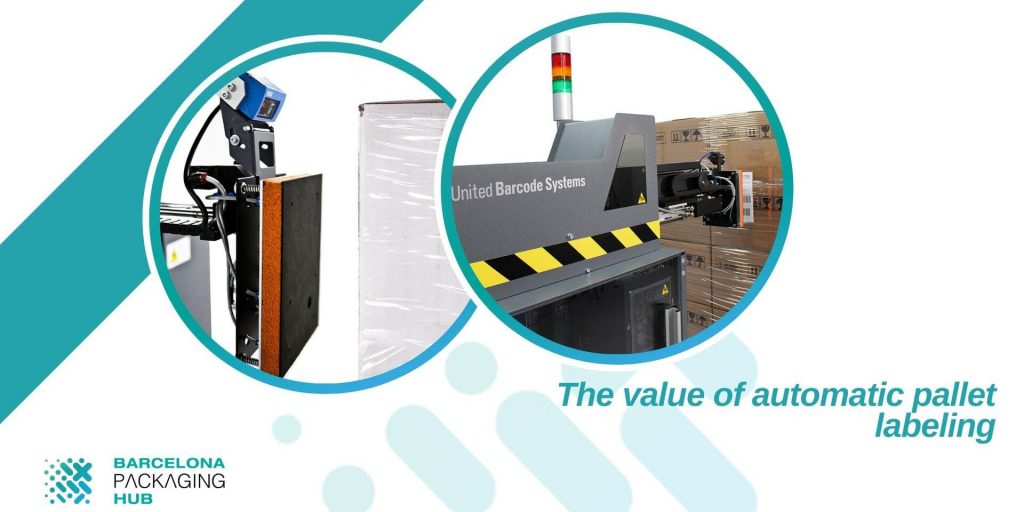Technology has obviously evolved, but have companies evolved at the same speed?
With regard to the automation of production processes, clearly yes. The dreaded machines that were going to take away our jobs are here and, in fact, they are not so bad to live with. The clearest consequence of this technological advance has been the increase in production volume and productivity and, perhaps, a less clear consequence has been the growth in importance of logistics.
Obviously, having control over every element of the supply chain process is important to guarantee good service and on-time delivery, as well as monitoring the process and avoiding economic deviations: traceability. However, Mario Bonet, Marketing Manager at United Barcode Systems, co-founder of Barcelona Packaging Hub, insists that “labeling at the end of the production line is the key“. It is for two reasons: it is the process that puts the seal and closes the production, which allows us to know the quantities and characteristics of the product shipped; and it is also the seal that contains the information of the product that is going to be sent to a specific location. In short, it is the last step in production and the first step in logistics (in terms of finished product). If we manage to automate the process, integrating it with the data provided by the line itself and the customer’s systems, we will achieve error reduction and savings.
Challenges to be overcome in automatic pallet labeling
Lately, there has been a lot of talk about the rising cost of labels, because, like so many other things, they have suffered the effect of inflation and shortages. However, the value of a pallet label is not the few cents a piece of glued paper costs, but the thousands of euros it identifies.
In addition to label price increases, labeling regulations and the profitability of direct printing, the challenges facing the automatic pallet labeling industry are:
- The irregularity of the pallets: sometimes, pallets do not have the perfect appearance that we imagine, but are composed of boxes of different shapes and sizes, which makes the surface on which the label has to be applied irregular. This problem can lead to incorrect application of the label and a serious error when identifying a pallet, because without a label, or with an illegible label, correct traceability is not possible. The solution: a Smart Tamp-Pad, as United Barcode Systems calls it. A pad on the applicator arm that conforms to the irregularities of the pallet to ensure that the label is applied. In addition, a verifying scanner can also be incorporated that will communicate to the equipment that the application has been carried out normally.
- The identification of several sides of the same pallet: these are not legal/regulatory requirements but those of the companies themselves. The importance of traceability today has motivated the need to have perfectly labeled pallets, not only on one side, but up to three different sides, in order to have a correct reading regardless of the orientation. For this reason, companies in the sector, such as UBS, have developed applicator arms that allow labeling on several sides.
- Placement of labels at different heights: palletizing is not the same for everyone. In many cases it is determined by production or storage and transport needs. It is for this reason that there is a growing need to label pallets that do not maintain the same height, or even pallets stacked at the end of the line. It will depend on what is most convenient for the manufacturing company and it is up to the labeling industry to adapt to these needs by providing solutions such as the APL8000 ELV: a pallet labeling equipment anchored to a lifting column that makes it possible to label at different heights, in compliance with the regulations.
- Integration, both at the physical and communicative level: none of the above would be useful if it is not possible to integrate the equipment with the PLC of the line, or with the customer’s ERP, MES, WMS or DBMS systems. In addition, the physical ease of integration is a very important plus point, so the ideal would be to have a compact machine, always ensuring the robustness of equipment that must operate in industrial environments.
Knowing not only the destination, but also the origin and everything that has happened in the process of elaboration and distribution of a product is key nowadays. Knowing where it is located, what have been the incidences of the batches or the origin of the raw materials used, all this information can be found in a correctly placed label. That is the value of automatic pallet labeling.


